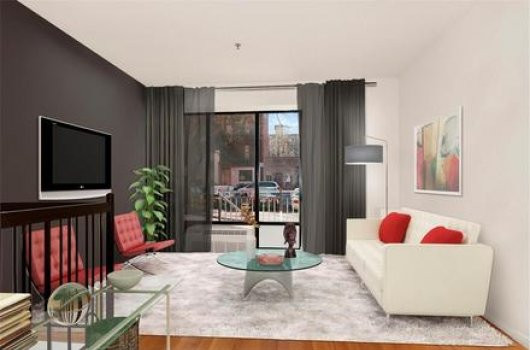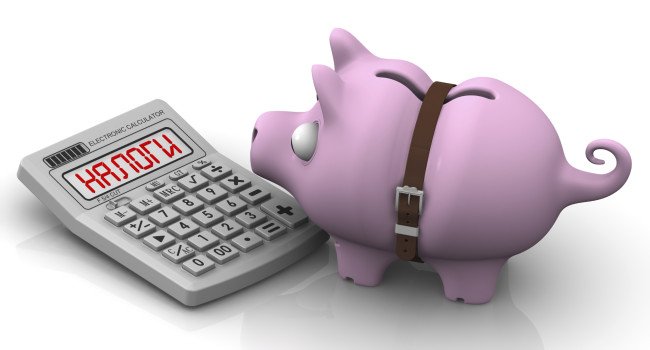Putting less than 20 percent down? Here's how to save money in the long run

Let's say you're looking to take advantage of spring buying season, but don't have 20 percent of the purchase price to put down. What are your options? We'll, first, here in New York City, you're probably going to have to stick to condos or single or multiple-family houses, since co-ops are almost never cool with buyers taking a loan of more than 80 percent.
When it comes to loan options, if you're looking to borrow more than 80 percent, you can sometimes choose between a conventional loan or an Federal Housing Administration loan. (FHA loans, though hard to come by in New York City—because of their $625,500 loan cap and because no co-ops qualify and most condos don't—can allow you to put down as little as 3.5 percent!). But loans with low down payments also come with costs for mortgage insurance costs, which protects lenders against losses resulting from defaults on mortgages. WalletHub, a free credit score and credit report website, yesterday released its 2016 Mortgage Insurance Report, comparing the costs of FHA loans versus conventional loans with private mortgage insurance (or PMI).
The site found that "FHA loans should only be considered by buyers with low down payments and below-average credit scores... Everyone else should opt for PMI." It's a popular sentiment across the industry. And here's the main reason why: "Generally, once your conventional loan amount reaches 78 percent of your home’s value, you can call your bank and they'll cancel the PMI," explains James McPartland of Citizens Bank. "But with an FHA loan you can't do that. Which is a real problem. If you kept the mortgage for 30 years, you'd be paying mortgage insurance that whole time," he says.
FHA vs. conventional loans, then and now:
In recent years (post-real estate market collapse), FHA loans became the primary option for low-down-payment consumers. But FHA loans have also grown significantly more expensive, according to WalletHub. “An FHA loan is simply a higher cost loan,” Adam Missry, a loan officer with Sterling National Bank, once told us. "It requires up-front mortgage insurance [which is currently at 1.75 percent of the base loan amount] that’s more expensive than it would be on a conventional mortgage. And that mortgage insurance stays on for the life of the loan.”
An FHA loan requires upfront mortgage insurance (currently 1.75 percent of the base amount), which conventional loans don't, and insurance premiums of 0.85 percent of the oustanding balance. The principal and interest payments are about $8 to $10 higher per month for every $100,00 you borrow. Generally, PMI costs between 0.20 percent and 1.5 percent of the balance on your loan each year (based on your credit score, down payment, and loan term), and is divided into 12 premiums and added to your monthly mortgage payment.
Who FHA loans work best for:
One very good thing about FHA loans, says Zack Tolmie of Guaranteed Rate who works with NYC FHA borrowers, is that "they're priced very, very competitively... You can get a very low interest rate (about 3.5 percent), and if you pay more than that—say, 4.5 percent—the bank will often give you credit of around 3 percent of the home purchase price to go toward closing costs (e.g. title insurance, mortgage taxes, bank origination fees, appraisal fees)." He has seen it happen with clients of his.
As WalletHub found, FHA loans are good options for those with low down payments or low credit scores. "But whenever there are higher credit scores or higher down payments, it's almost always going to make more sense to do a conventional PMI loan" because of the aforementioned insurance which you'll pay for at least 11 years on an FHA loan (unless you refinance, which, in New York City comes with a lot of pricey fees).
So, "if you're planning on paying off sooner rather than later, it's going to make sense to go with a conventional loan" and avoid paying that years-long insurance, Tolmie says.
But for someone with credit score issues (Tolmie defines a low score as anything under 700), it makes sense to go the FHA route if you can, because with a conventional loan, "for every 20 points your score drops, PMI rates go up about 20%-30% per month," he says.
FHA loans aren't easy to come by in New York:
"It's easy to get an FHA loan on a single-family home or two or three-family home," says Tolmie, "and FHAs are always more popular in non-urban areas because in cities, the condominium building itself has to be FHA approved, which is a lengthy, bureaucratic process (think going to the DMV)." Also, the cap for an FHA loan is $625,500—on the lower side for a NYC home.
In New York, co-ops are out of the question. And Tolmie estimates that there are only about 20 condo buildings in all five boroughs that are approved for FHA lending. (The Department of Housing and Urban Development has a searchable database of approved condo projects.)
The upsides to conventional loans even when you have a low down payment:
"Banks are starting to open up to lending 90 percent," says McPartland. "One way savvy buyers do it is they take a first mortgage of 80 percent and then a second mortgage—usually a home equity line of credit — for the other 10 percent so they don't have to pay the PMI. You'll take a slightly higher interest rate just on the 10 percent, and we can do that up to a $2 million loan," he says. (Note: co-ops typically don’t allow for secondary financing.) And the upside to HELOCs is that the bank pays closing costs, too like title insurance and mortgage taxes, he says.
You Might Also Like
























